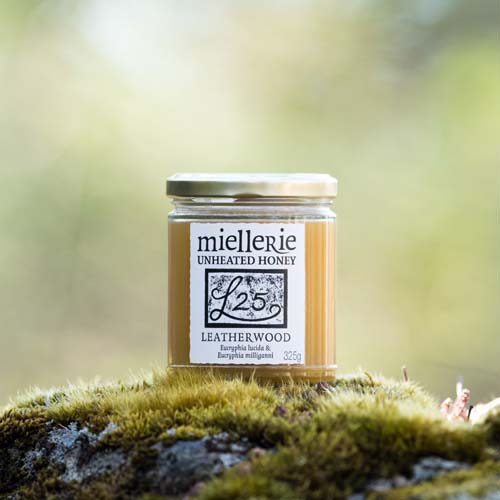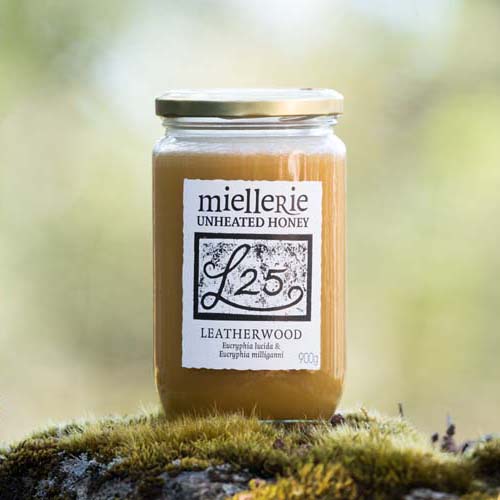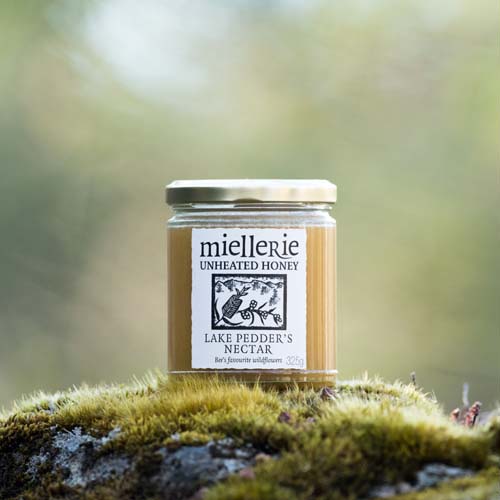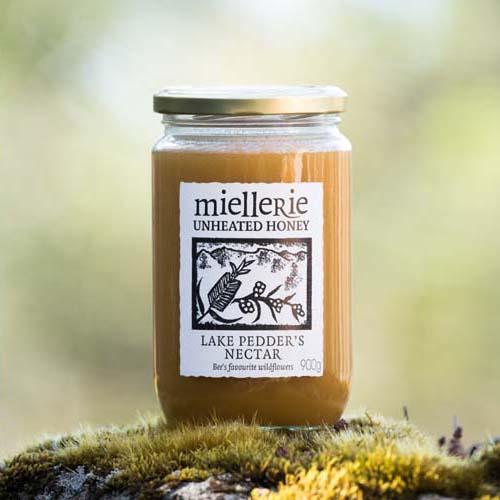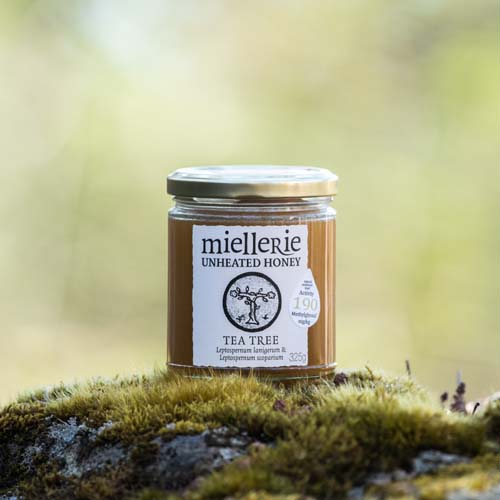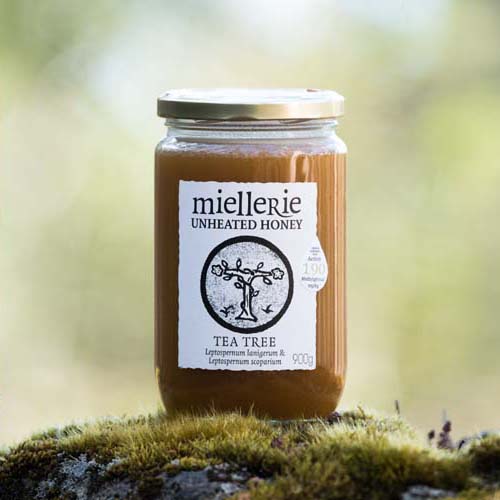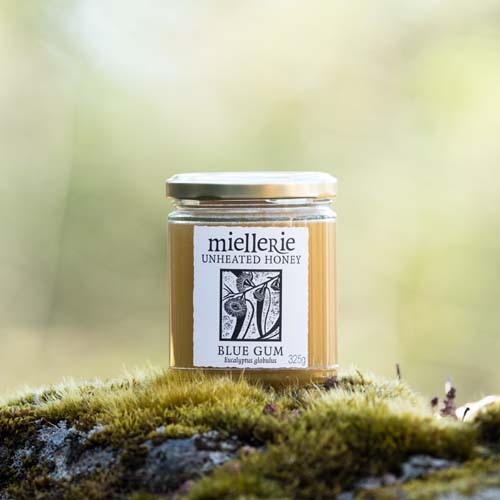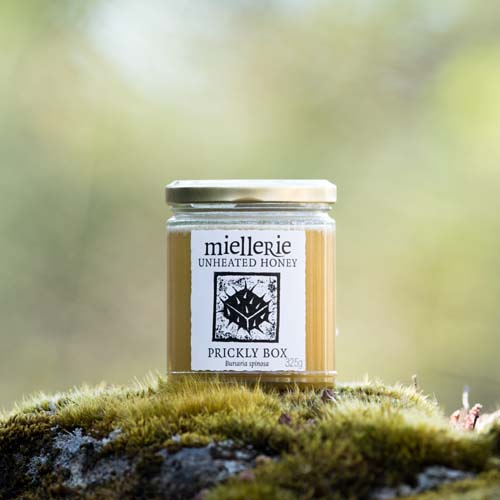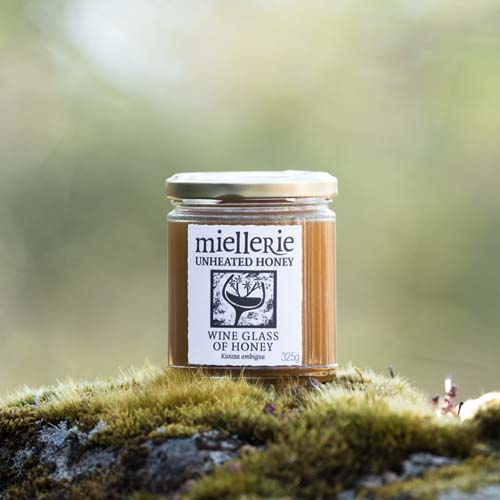Miellerie Honey - a subtle marriage of French tradition and Tasmanian native flowers
LEATHERWOOD
Eucryphia lucida & Eucryphia milliganni
The Leatherwood, a gorgeous tree growing from the cold, deep rainforest of the World Heritage
wilderness of South-West Tasmania. Her yield has flowed since Gondwanaland creating nectar of
a distinctive flavour full of soft aromas like the sweet dew of the cold rainforest floor. Her
four-petal blossom is a ‘lotus of the air’ where bees gather her nectar during the stillness
of the hot summer time.
LAKE PEDDER'S NECTAR
Bee’s favourite wildflower
Draw me a lake….spirit of the still, silenced beach of tannin waters and
sandy-quartz shores. From the spring of the Huon River to the lake; the vibrant
life and the endless ripples of the water bring to the nectar a magical diversity
of flora blossoms; “…he is rich of aroma with a little bitterness”. During late
October to early January this garland will yield to the bees their favourite
wild flower nectars from the heart of Tasmania’s world heritage.
TEA TREE
Leptospermum lanigerum / Leptospermum scoparium
The ancient symbol of medicine, the snake, winds his way through a small gorge of
the upper Huon River and Manuka Creek, old rivers from the glacier’s time flowing
through the World Heritage wilderness of South West Tasmania. This is where Miellerie
finds the short, endemic trees of the Leptospermum, or Tea-Tree family.
This is an extraordinary landscape where the elemental strength of spirit
gives this honey its vitality. He has an amber colour with a distinct and
pronounced taste, characteristic of his flavour with a remarkable thick
texture of soft, fine crystals, rich in natural antibiotics.
BLUE GUM
Eucalyptus globulus
Madame Blue Gum opens her branches as a crown of blossom from October to December,
from seaside to hill top. She is an elder, a sage, and will yield in her own rhythm
of 5, 7, or 9 years; Tasmania’s flower emblem. Each flower like a little sun,
she gives to us; each flower a larder of nectar, she gives to the bees. Her honey
is soft and delicate in perfume, attracting the swift parrot and bees to share
her crown to live. We have sheltered within the rooted hollows of her trunk,
between the earth and cosmos, surrounded by the music of dripping nectar.
The blossom yields to us, and the perfume seduces us.
PRICKLY BOX
Bursaria spinosa
A gift from nature for Christmas and New Year, this is her time of blossoming.
Prickly Box grows slowly in poor soil, bending under the wind between rock and gum;
beauty of the dry land. She is a shrub of delicate little white flowers; a
lace hiding her body of thorns. Craving the mid-summer rains, only then will
she offer her nectar. These ephemeral yields allow bees to gather her
sweetness from her corral cradling the honey of warm, butter-scotch flavours.
WINE GLASS OF HONEY
Kunzea ambigua
The Lady Kunzea of the Coast dances from Flinders Island to Wine Glass Bay.
She welcomes the dawn of Tasmania for the arrival of Summer. Her little pink buds
burst open like a thousand, sparkling stars! Now, her white blossom shines like
velvet lace, where land meets sea. At twilight, her rich nectar embraces the air,
seducing us to fill our glass with honey, and celebrate the nuptial time for
all creatures, great and small.



